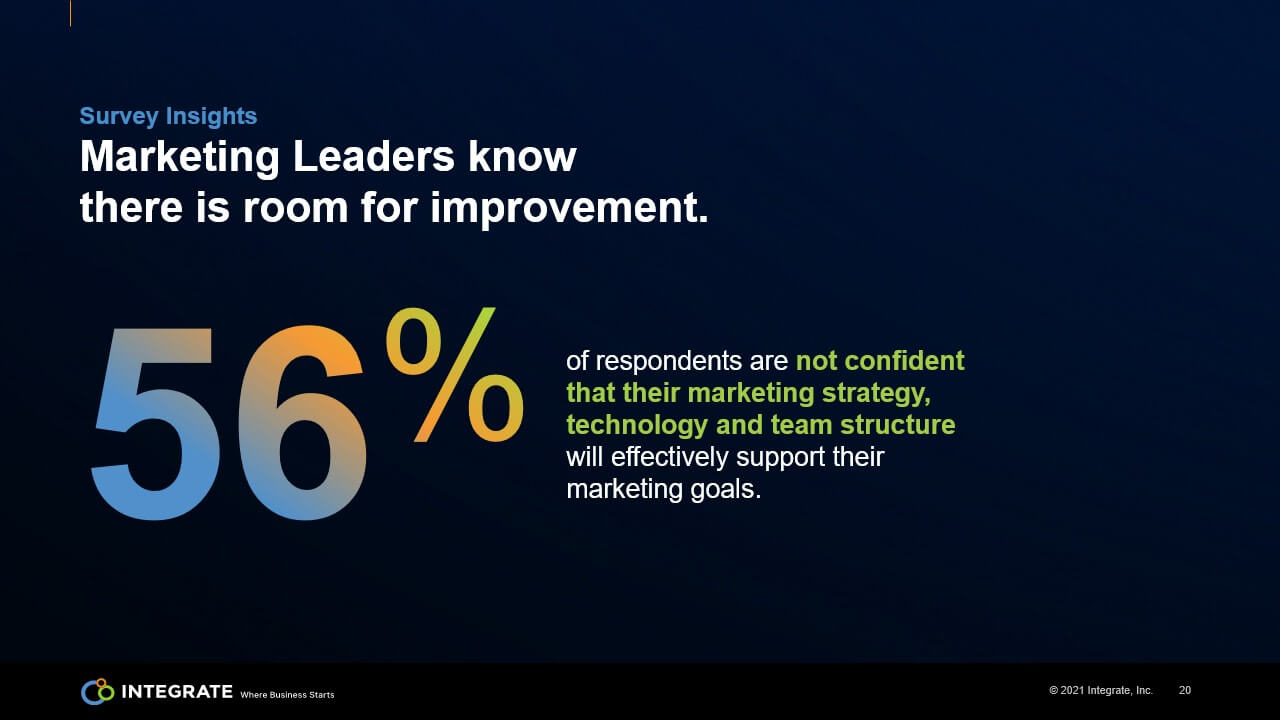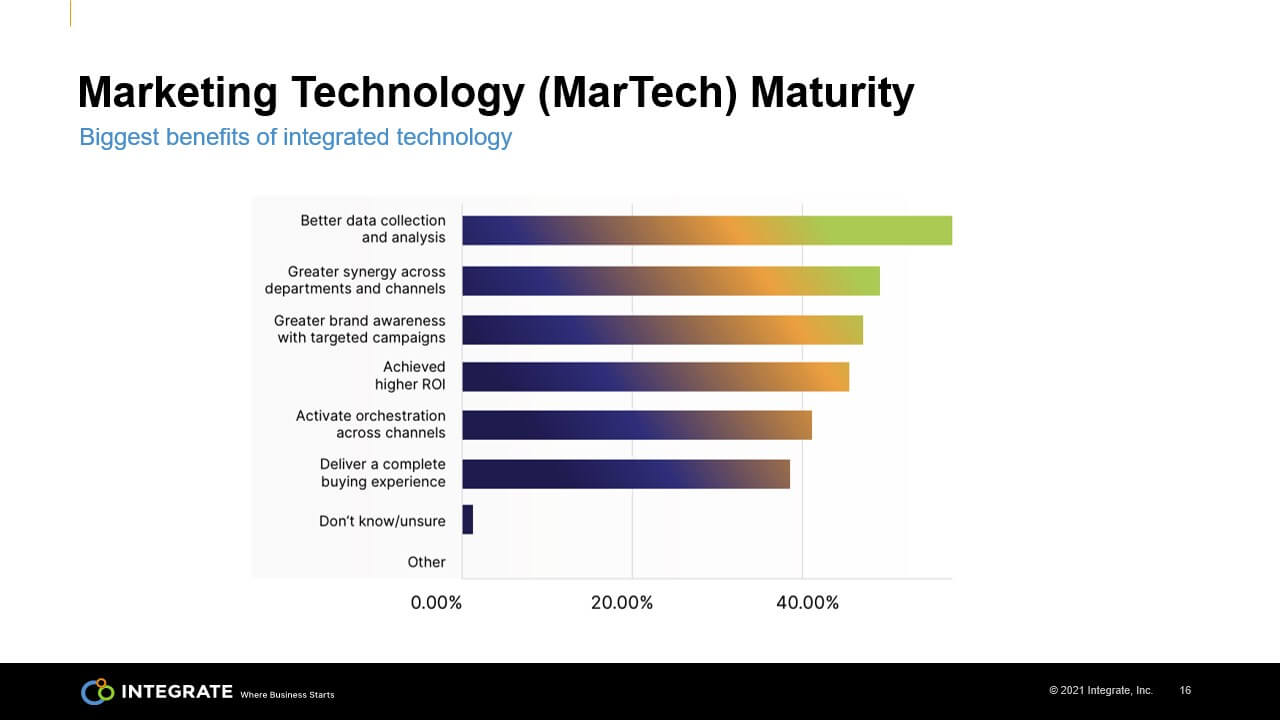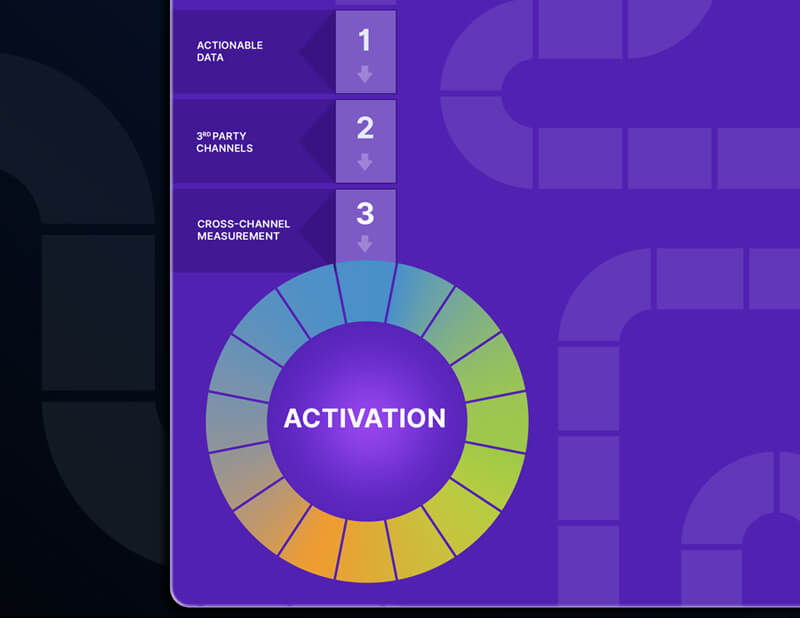4 Steps to Making Your MarTech Investment Worth It
Today’s B2B buyers expect messaging and content that speaks directly to their pain points, needs, and business goals at every stage of the buyer’s journey and across every channel. They make purchasing decisions in large groups requiring a lot of touchpoints and research in 10+ channels. Add to that the fact that as little as 15% of your accounts may be in-market at any time, and it’s clear that B2B marketers are playing an increasingly complicated game with their buyers and need to reexamine their approach.
In fact, Scott Brinker, editor of chiefmartec, recently reported that there are now nearly 10,000 marketing technology solutions currently available—well, 9,932 to be exact. So not only do B2B marketers have an overwhelming choice when it comes to technology, they’ve likely already purchased solutions without the payoff that they expected.
How do you know you have the right technology platform for what you need to accomplish? Are you over-invested in siloed pieces of technology that require you to stitch together data from a bunch of systems? To help marketers protect their sanity, we’re sharing four steps to ensure that your marketing technology stack is helping you rise above your competition by effectively reaching your buyers—in the right channels, at the right time.
1. Get Your Marketing Data Right
At the core of good marketing is having the right data. However, despite spending billions every year to create demand, one of the biggest obstacles confronting marketers is the ability to get clean, intelligent leads from all their demand campaigns, channels, and providers. The challenge continues as they attempt to apply those leads into cross-channel programs that convert to qualified opportunities that can be scaled. In fact, 84% of marketers don’t strongly believe that their databases are effective and unified enough to enable them to intelligently shift channels, messaging, and strategies to create relevant cross-channel experiences for every buyer based on the needs of the buying committee and the stage of the account.
A database with marketable and actionable data on accounts and buyers is necessary. Marketers need to ensure only high quality, marketable, and actionable leads are automatically entering their systems from all demand channels. They need tools that simplify governance and ensure compliance. Otherwise, data problems will make it impossible to execute a connected buyer’s journey or a buyer-driven personalized experience.
2. Take a Holistic, Cross-Channel View of Measurement
Every B2B marketer knows how important measurement is, but creating, delivering, and reporting on the performance of meaningful cross-channel experiences is easier said than done. More often than not, cross-channel measurement involves a massive amount of manual labor, spreadsheets, and custom reporting. And for channels like content syndication, there is just no easy way to do it on your own.
The volume of manual work needed to activate in-market accounts on the third-party channels where buyers do research is too high. In fact, 64% of marketers said they don’t have the bandwidth to deliver true omnichannel buyer-driven personalization.
Marketers must take a holistic, cross-channel view that allows them to determine their next best investment: What should you do more of? Where should you do less? How do you get better at reaching your buyer?
3. Examine Your MarTech Stack
For many marketers, their tech stack may be missing a critical component. One reason teams struggle with implementation of cross-channel strategies is that their marketing automation (MA), customer relationship management (CRM), and ABM solutions are not built to enable their teams to deliver the meaningful cross-channel interactions buyers seek.
MA and CRM are built to handle high volumes of inbound to add to an email nurture. ABM technology is built to identify in-market accounts and help tailor website, email, chat, and digital advertising to those accounts.
The problem? The tech is focused on channels marketers own, whereas buyers are doing the majority of their research on third-party channels like LinkedIn, Facebook, global media publications, and events. Your tech stack isn’t set up to help you activate, govern, and measure cross-channel campaigns on third-party channels.
4. Activate Across Your Channels
B2B buyers now expect seamless cross-channel journeys, and they will quickly tune out when brands do not deliver. This means that B2B marketers need to fit together the right campaigns and messages to the right channels so they can reach the right accounts and buyers at the right time and place. They need to take their target account lists from account-based marketing (ABM) and intent providers and activate campaigns in all the channels where their buyers exist, whether it’s through content syndication, digital ads, webinars, in-person events, or social media. This is a notoriously difficult and complex task for B2B marketers.
The solution? Cross-channel activation, a powerful proven process that can double your ability to influence opportunities in today’s market.
Making the Most of Your Investments
In Integrate’s Marketing Maturity Report, created in partnership with Heinz Marketing, 56% of marketing leaders reported that they were not confident that their org structure, strategies and marketing technology would effectively support their goals. The same respondents also identified the greatest benefits of properly integrated marketing technologies: higher ROI, greater synergy, delivering a complete buying experience, and more.


To make the most of your ABM investments and build upon your foundation of activation on owned channels, marketers need a new layer of technology purpose-built to help marketers activate in-market ICP accounts on all the third-party channels where buyers do research.
Register for our upcoming Integrate LIVE demos where we’ll share how Integrate’s Demand Acceleration Platform can activate buyers across channels with intention and precision, cut through the noise, and influence opportunities in today’s multi-buyer, multi-touch, and multi-channel environment.









